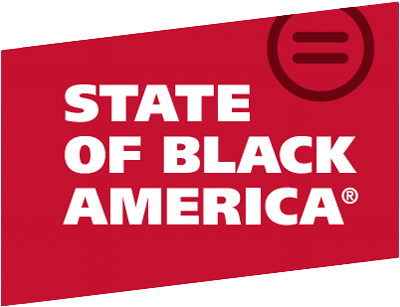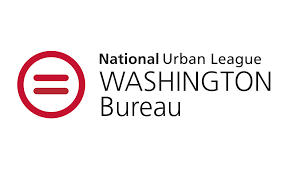America’s criminal legal system is rooted in the nation’s history of legalized slavery and racial oppression. Our current system of punishment is still founded on a basic conception of outsider-hood that continues to create and perpetuate racial, ethnic, and class inequality. Criminal legal reform efforts must engage directly with this sordid lineage to unmoor the inequitable impacts and outcomes of our current system of “justice.”
As Cornell William Brooks, former president and CEO of the National Association for the Advancement of Colored People, wrote: “Communities of color are over policed, over-prosecuted, over-incarcerated and yet underemployed.” The racial disparities throughout our criminal legal system are considerable. For example, one in three Black men are incarcerated in their lifetimes compared to one in 17 white men. When it comes to policing, these disparities are even greater, as evident in the number of Black men and women who are killed without justification by law enforcement officers. A mapping of police violence illustrates that Black Americans are three times more likely to be killed by police officers than white Americans, while nearly twice as likely to be killed as a Latinx person. Black Americans are also about 30% more likely to be unarmed in fatal interactions with police than white Americans.
Can the federal government do anything to transform the American criminal legal landscape and reduce racial disparities? This is a genuine question. So many of these challenges exist at the local and state level. For instance, local jails and state prisons account for 91% of the nation’s incarcerated population. To put it just a bit differently: There are about 2.2 million people behind bars in this country, but only about 175,000 of them are in federal prison. Additionally, there are more than 10 million admissions in and out of the nation’s colossal network of local jails each year; more than 4.5 million people on probation or parole; and more than 70 million people have conviction histories that subject them to lifelong consequences to their lives and livelihoods. And when it comes to policing, there are 18,000 local police departments dotting the United States.
Yet still, the federal government is uniquely situated to incentivize systemic reforms for state and local-level criminal legal systems.
Consider the many forms that federal involvement in local criminal justice affairs can take. Federal agencies can and do enforce federal law against localities. For example, the Justice Department’s Civil Rights Division and U.S. Attorneys’ offices have the statutory authority to bring civil rights actions against corrections agencies and local police departments in addition to criminal prosecutions against individual officers to enforce federal rights law when police violate those rights. And through the federal government’s grantmaking powers, it can shape state and local criminal justice policy
Federal funding schemes have long encouraged states to focus their resources on law enforcement interventions to deal with social problems, often resulting in our government locking up ever more people for ever longer periods of time. This has resulted, in part, in today’s bloated carceral state. In fact, since the 1960s, the federal government has played a central role in shaping the nation’s criminal justice landscape through outlays of grant money to states. For decades, federal grants encouraged states to increase arrests, prosecutions, and imprisonment. Federal funds have supported the expansion of local jails, including paying jails to house federal incarcerated individuals as well as ICE detainees.
One example of how federal dollars incentivized the growth of the carceral state that only exacerbated racial disparities is through the Violent Crime Control and Law Enforcement Act of 1994 (The 1994 Crime Bill), which authorized incentive grants to build or expand correctional facilities. Grants totaling $12.5 billion were authorized for incarceration, with nearly 50% earmarked for states that adopted tough “truth-in-sentencing” laws that required people to serve substantial portions of their custodial sentences. Other examples over the last half century include the Omnibus Crime Control and Safe Street Act of 1968, which provided $400 million for law enforcement purposes; and the Anti-Drug Abuse Act of 1986, which increased federal funding for law enforcement to fight the drug war. Then in 2005, when reauthorizing the Violence Against Women Act (VAWA), Congress created the Edward Byrne Memorial Justice Assistance Grant program (JAG). All 50 states, territories, and more than 1,000 local governments rely on JAG dollars, whose funding level for the entire program averages between $300 to $500 million yearly. Those dollars support almost any criminal justice activity covered by the federal statute, yet about 60% of state-level JAG dollars support law enforcement and corrections functions. In his 2013 book, “Rise of the Warrior Cop: The Militarization of America’s Police Forces,” journalist Radley Balko encapsulated this crime fighting incentive well: “As local police departments were infused with federal cash, members of Congress got press release fodder for bringing federal money back to the police departments in their districts.”
The federal government should no longer subsidize mass incarceration and should instead incentivize states to reverse the era of excess punitiveness and shrink the carceral state. One powerful way to do so would be for the president to champion and Congress to pass the Reverse Mass Incarceration Act (RMIA) to unwind these incentives by ensuring that federal grants are sent only to states that reduce incarceration. Designed to undo the damage inflicted by federal policies incentivizing states to lock up more people and to lock them up for longer periods of time, the RMIA would establish a grant program rewarding states for lowering their prison populations.
For states to obtain funding under the RMIA, they would have to submit plans describing how they would reduce incarceration; the RMIA would set an across-the-board reduction target for all states to meet. The grant would encourage states to take numerous steps to undo mass incarceration, like changing sentencing laws, establishing new programs diverting people away from the system, or improving wraparound services for individuals reentering their communities after incarceration. Leaders on both sides of the political spectrum all agree: The United States must end mass incarceration, which highlights and exacerbates racial inequality in America’s criminal punishment system. And we believe the RMIA can serve as a vehicle for reigning in state prison populations, while vastly reducing racial disparities in the system.
As calls for racial justice continue ringing in the air, the federal government should use its powers to realize the humanity, equality, and dignity of all. Black and Brown people deserve more. And anything less threatens to make our justice system anything but.




